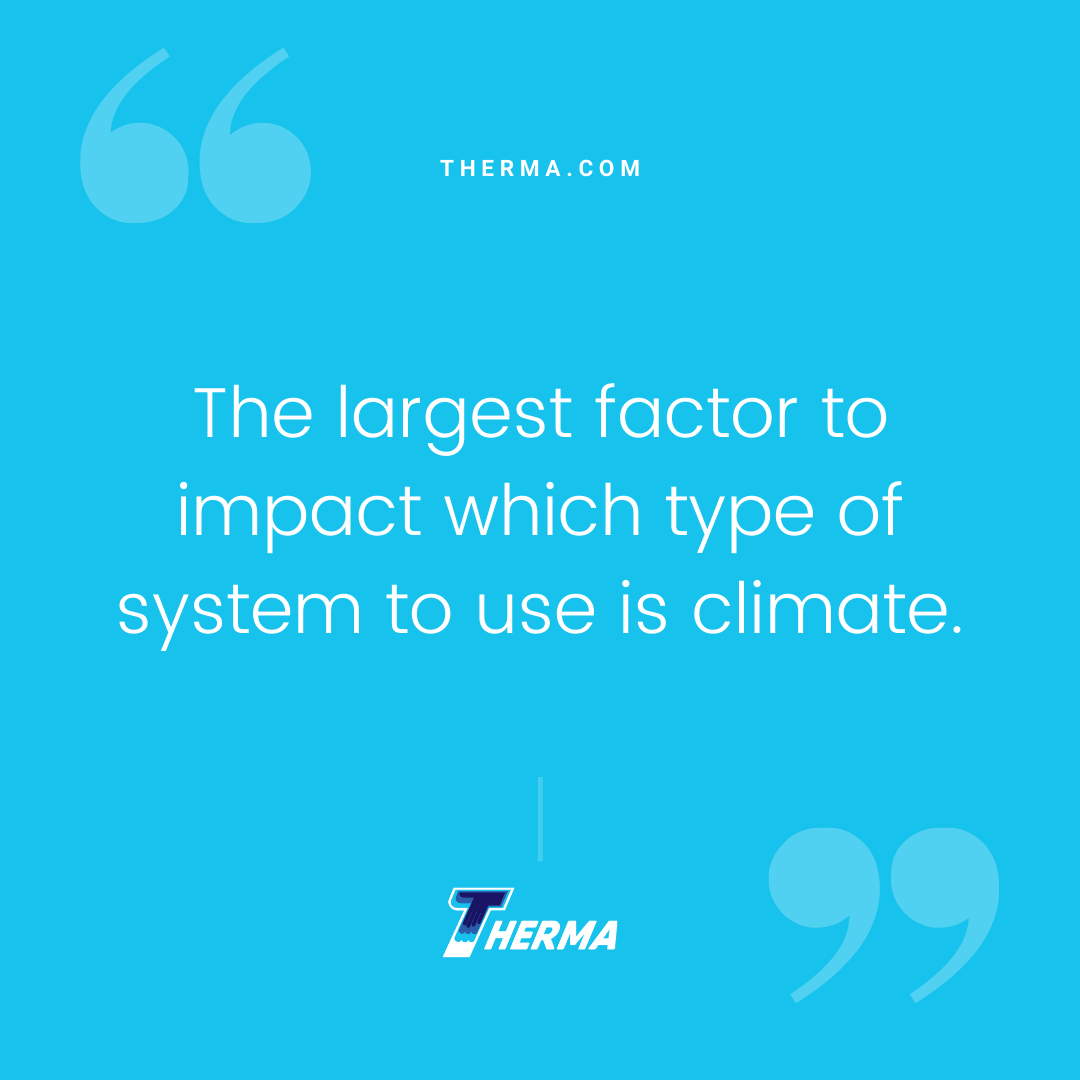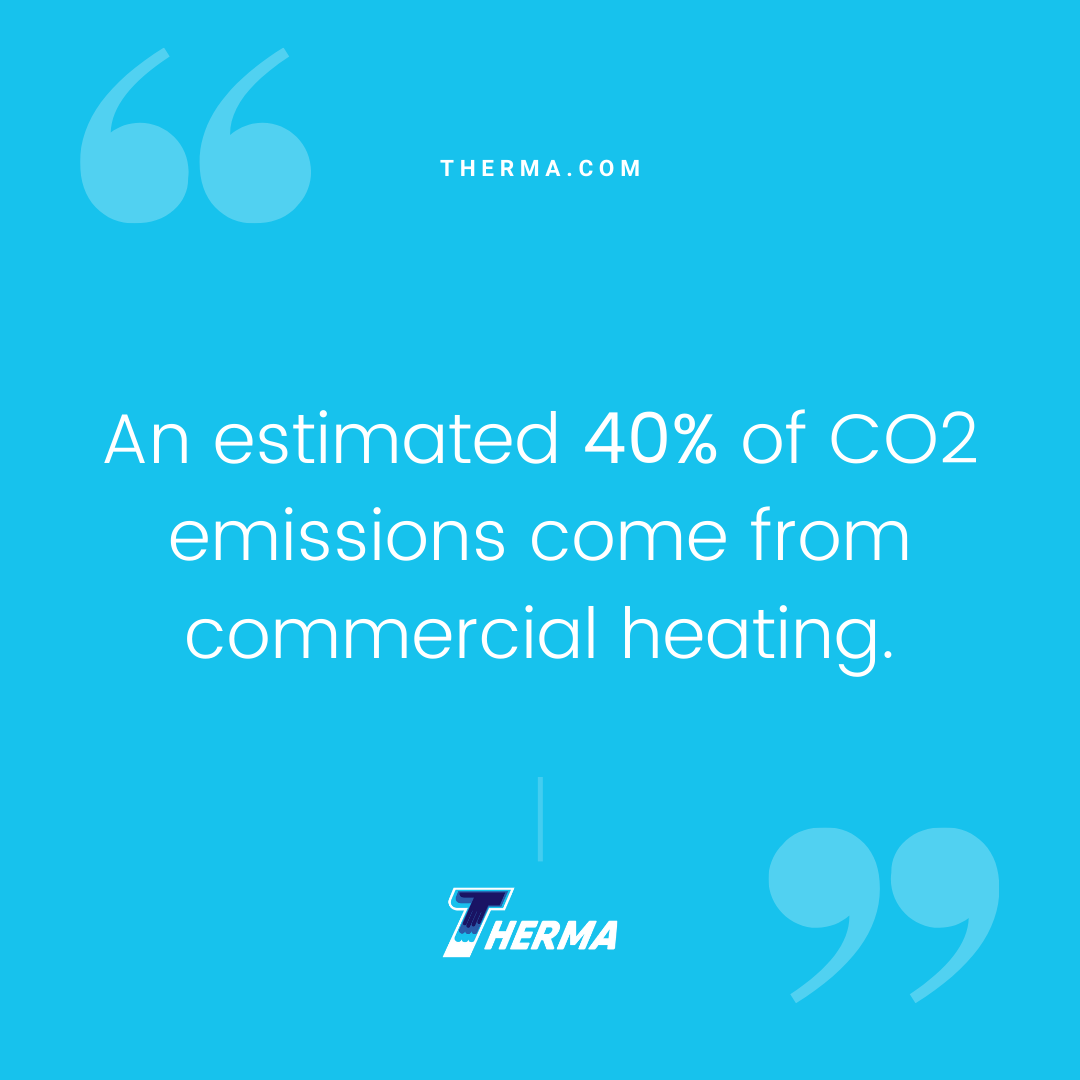by Patti Dees
Heat pumps and furnaces are common types of heating equipment in both residential and commercial properties. But which is best for your facility? That depends on the climate, limits on investment or operating costs, efficiency and maintenance expectations.
The Renewable Energy Hub states that an estimated 40% of CO2 emissions come from commercial heating. As companies take a closer look at the impact they have on the world, heating equipment is a prime opportunity to improve efficiency, control costs and lower carbon footprints.
Heat Pump
Heat pumps are designed to use indoor and outdoor coils to drive heating and cooling. The function of the coils as condensers or evaporators is reversible and depends on whether heating or cooling is needed within the building. Different designs are available based on the heat source and distribution fluid. Sources include air, ground, and water. The heat is distributed via air or water flowing throughout the building. Two common types found are:
Air Source Heat Pump (ASHP)
ASHPs are relatively low maintenance with an average life of 10-25 years. State and federal tax credits may be available depending on certain criteria.
Air Source Commercial Package Air Conditioners and Heat Pumps
Also known as Roof Top Units (RTU), these pumps are self-contained units normally placed on a facility’s roof. They combine the technology of the ASHP with other technologies to meet the temperature needs of the building. Compared to ASHP, RTUs have a higher maintenance cost and shorter life due to their location. They last approximately 15 years on average.
 Furnace
Furnace
While heat pumps can use a variety of sources and distribution fluids, furnaces are more limited. Furnaces either burn fuel or use electrical resistance to produce the requisite heat. The heat is then distributed using air. Here are two common types of furnaces:
Gas Forced Air Furnace (Gas FAF)
Combustion furnaces produce carbon monoxide and carbon dioxide as byproducts. These gases are not usually found within the building as the supply air is separated from the combustion air, which is vented outdoors. Due to the hazards associated with combustion, this type of heating requires regular maintenance and adherence to fire codes. The average life of the equipment is 12-17 years, with some lasting 20-30 years.
Electric Forced Air Furnace (Electric FAF)
The electric furnace can be more expensive to operate than the gas furnace. The amount of heat produced is proportional to the current passing through the element. The equipment requires periodic maintenance and lasts roughly 20-30 years on average.
Comparing Heat Pumps vs. Furnaces
A few key factors should be considered when deciding between a heat pump or furnace.
Geography
The largest factor to impact which type of system to use is climate. Heat pumps struggle in very cold areas, leading to a higher reliance on backup heating to meet a building’s needs. Another concern is the outdoor components’ exposure to weather and chemicals. In some cases, salty environments can decrease the life of ASHP to as low as five years. However, furnaces tend to overheat buildings in warmer environments. Geography can also impact fuel costs, potentially driving up operating costs for units that rely on combustion.
 Installation and Operation
Installation and Operation
Heat pumps are more expensive to install than furnaces. However, without the need for fuel, operating costs are far less than that of gas FAF. According to the Bonneville Power Administration HVAC Technology Guide, electric FAF are more expensive to operate than both gas FAF and heat pumps.
Efficiency
ASHPs offer the highest efficiency with 1 kWh of electricity, producing 4 kWh of energy for heating. Electric FAFs are less efficient than heat pumps. At best, they fall just under 100% efficiency. They are, however, still more efficient than the average gas FAF.
Sizing
Whether you opt for a furnace or a heat pump, sizing is essential for both. Undersized equipment leads to extended run times as a unit struggles to maintain the desired temperature. As the unit runs longer, efficiency and cost-effectiveness drops.
This does not mean that oversizing equipment more easily controls the interior climate. Oversizing leads to temperature swings from increased cycling and may also produce higher air pressures within the ductwork. Excessive cycling causes the unit to fail more quickly. Higher pressures strain ductwork and can create the impression of drafts in some areas.
Finding the Right Heating Equipment
The best heating options depend on many factors and circumstances. It is a challenging decision juggling finances, expectations and a wish list of features. Working with professionals to design new construction or upgrade current systems improves customer and occupant satisfaction. Contact your Therma HVAC experts today!
Patti draws on her background as a chemical engineer to share information with readers on technology, manufacturing, and construction.
Sources
The Renewable Energy Hub – Commercial Heat Pumps
Energy Saver – Air-Source Heat Pumps
Air Conditioning, Heating, Refrigeration News (ACHR News) – HVAC System Life Cycles: How Long Should It Last?
Bonneville Power Administration (BPA) – HVAC Technology Guide







